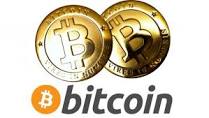Self-Fulfilling Prophecy or Positive Feedback Loop? Bitcoin Traders Question Price Rally
While the price of bitcoin surged more than 16% between 11th and 12th June, the exact reason for the increase remains a matter of debate.
But the variety of responses would seem to point to larger questions about the recent rally and the dynamics of the bitcoin market.
For example, market experts remain interested in the role miners are playing in the current price increase, and how they, as the sole recipients of all bitcoins minted, may impact trading in the weeks ahead.
As bitcoin prices climb, miners bring in more value for every new block of bitcoins they create. In turn, miners are now able to sell fewer bitcoins and keep more of the reward they obtain by minting new bitcoins, thereby potentially reducing supply.
In short, some like Marco Streng, CEO of bitcoin cloud mining service Genesis Group, believe the bitcoin market could be entering a “positive feedback loop” powered by reduced supply.
Streng told CoinDesk:
“The price of bitcoin influences miner activities and miners influence the price. It’s both ways. If the price rises miners need to sell less of their mined returns in order to cover their operating costs. In consequence of this, there is less BTC sold per day by miners which reduces the sell pressure, and therefore gives the price room to rise.”
Still, others pushed back against this idea. Guy Corem, former CEO of bitcoin mining firm Spondoolies-Tech, said that regardless of the behaviors of miners, the price increase was likely spurred by demand.
“There is external demand, prices are rising, so miners needs to sell less to cover cost, but it doesn’t cause further price increase,” Corem said.
Rather, he said that the halving event has created a perception that supply restrictions will boost price, and the market is simply positioning for this change.
He added:
“Right now it’s the perception that the price will increase around the halving. [It’s a] self fulfilling prophecy.”
Increasing volume
Yet, despite this development, most market observers remain convinced that bitcoin prices are spiking due to demand.
Nick Tomaino, a former business development for Coinbase, spoke to the robust trading activity that existed over the weekend, pointing to strong volumes as a sign that this represented traders are acquiring bitcoin in greater numbers.
Bitcoinity data reveals that trading volumes hit 2.58m and 2.67m BTC on 11th and 12th June, respectively. These figures represented a sharp increase from the 1.04m BTC transacted on 10th June, and the prior three sessions experienced similar tepid volume.
Tomaino told CoinDesk:
“The increased volume indicates this is being driven more by demand than supply.”
Another way to analyze the increase is to determine whether the new bitcoin purchases are coming as a result of traders selling fiat currencies or alternative cryptocurrencies.
For example, it remains possible that traders of ether (the native digital asset that powers the Ethereum blockchain), or litecoin, or any other cryptocurrency, are exiting those assets in favor of bitcoin.
Historically, bitcoin and ether have frequently experienced a situation of inverse demand, meaning that investors would switch back and forth between buying ether and bitcoin. At some points, this relationship was strong enough that market experts declared that the two experienced a perfect negative correlation.
However, this situation seems to have changed, as ether’s price fluctuated little amid bitcoin’s rally. What this means, according to ARK Invest’s Chris Burniske, is that the two currencies entered a new trend where bitcoin’s gains do not rely on investors pulling out of ether.
Instead, demand was fueled by an inflow of new fiat currency, stated Burniske, who added:
“New fiat money flowing into bitcoin makes sense. We typically see a spike in mainstream interest when bitcoin’s price starts to spike, as the fear of missing out sets in.”
Macroeconomic buying
Others remain certain that macroeconomic factors are driving increased demand and the price increase.
For example, several market observers told CoinDesk that the concerns regarding China’s economy could be heavily impacting demand for bitcoin, and at press time, the narrative is dominating the international news cycle.
This growing adoption has been asserted by Huobi, the China-based, fee-free exchange that is one of top drivers of bitcoin volume, which told CoinDesk that it believes most of its users are buying on demand.
“About 13% of users invest in bitcoin as a safe-haven asset,” stated Du Jun, the exchange’s co-founder.
Another development that could be fueling demand is the potential for a ‘Brexit’. Tim Enneking, chairman of cryptocurrency investment fund EAM, told CoinDesk that the UK’s potential exit from the European Union helped fuel the robust demand that bitcoin enjoyed over the weekend.
The nation’s voters will decide on 23rd June whether the nation will Brexit or Bremain, and should the UK strike out on its own, this development could easily provoke an interest in alternative assets.
Charles L. Bovaird II is a financial writer and consultant with strong knowledge of securities markets and investing concepts.
Via:http://www.coindesk.com/supply-demand-powering-bitcoins-price-gains/


